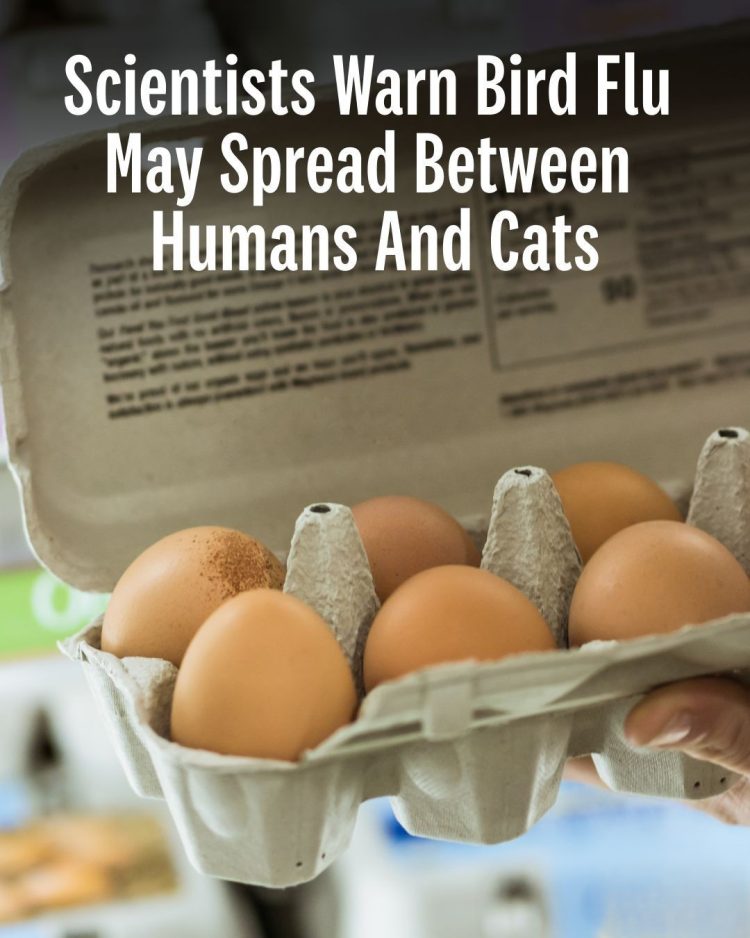Two cats have already been infected.
New data suggest that cats can get bird flu from people.
The infected cats were owned by dairy workers.
Doctors say it’s possible to get bird flu from pets, but unlikely to be an issue for most Americans.
Bird flu continues to make headlines while farmers across the United States grapple with cases in their flock and cattle, and one person died from a case of severe bird flu in January. While there is currently no evidence of human-to-human transmission, a new study is looking at the potential spread between humans and cats.
The study, which was published in the Centers for Disease Control and Prevention’s (CDC) Morbidity and Mortality Weekly Report, breaks down how two indoor domestic cats contracted highly pathogenic avian influenza (HPAI) A(H5N1) virus, a.k.a. bird flu. The cats lived in the homes of dairy workers.
One dairy worker had vomiting and diarrhea before their cat became sick, and the other cat owner had eye irritation after being splashed in the face with milk—but both declined to be tested for bird flu. Both cats developed respiratory symptoms and neurological issues, and one cat later died. While the owners declined to be tested for bird flu, the cats were tested and confirmed to have the virus.
Meet the experts: Thomas Russo, M.D., professor and chief of infectious disease at the University at Buffalo in New York, William Schaffner, M.D., an infectious disease specialist and professor at the Vanderbilt University School of Medicine; Bruce Kornreich, D.V.M., Ph.D., director of the Cornell Feline Health Center at Cornell University’s College of Veterinary Medicine
The study is raising a lot of questions about whether bird flu can be transmitted to pets and vice-versa, as well as how this could even happen. Here’s what we know, plus what infectious disease experts and a veterinarian want you to keep in mind.
How is bird flu passed from humans to cats?
Again, because these farm workers refused to be tested for bird flu, we can’t say for sure that they gave their pets the virus. However, there are a few theories on how the cats may have gotten sick if they did, in fact, get bird flu from their owners.
“It’s possible that the dairy workers came home with the virus on their hands, and that the pet cat licked their hands,” says William Schaffner, M.D., an infectious disease specialist and professor at the Vanderbilt University School of Medicine.
The virus could also be spread from contaminated work clothes, and there’s also a chance that cats would get it after drinking unpasteurized milk that their owners brought home from work, says Thomas Russo, M.D., professor and chief of infectious disease at the University at Buffalo in New York.
While there’s no definitive proof that the cats got bird flu from their owners, “the possibility of transmission exists,” says Bruce Kornreich, D.V.M., Ph.D., director of the Cornell Feline Health Center at Cornell University’s College of Veterinary Medicine.
How bird flu usually spreads
Infected birds can shed bird flu in their saliva, nasal secretions, and poop, according to the CDC. The virus can also infect others through contaminated surfaces, per the organization.
But bird flu has also been detected in unpasteurized milk, according to the U.S. Food and Drug Administration (FDA). Eating uncooked or undercooked poultry or beef may also lead to infection, per the CDC.
Signs of bird flu in cats
Cats may develop a few symptoms of bird flu, and they tend to get progressively worse, according to the American Veterinary Medical Association (AVMA). Those may include:
Loss of appetite
Lethargy
Fever
Neurologic symptoms like circling, tremors, seizures, or blindness
Heavy discharge from the nose and eyes
Severe depression
Rapid breathing, trouble breathing
Sneezing
Coughing
“Cats can get really sick, and they develop life-threatening disease in most cases,” Kornreich says.
How do humans usually get bird flu?
So far, there have been 70 cases of bird flu in humans detected in the U.S. and one death, per CDC data. The majority of cases have been in people exposed to infected dairy herds or poultry, although there are at least three cases where the source of exposure isn’t known.
Human infections with bird flu may happen with the virus gets into a person’s eyes, nose, or mouth, or is inhaled, per the CDC.
Signs of bird flu in people
Symptoms of bird flu in people have ranged from mild to severe, according to the CDC, and may include:
